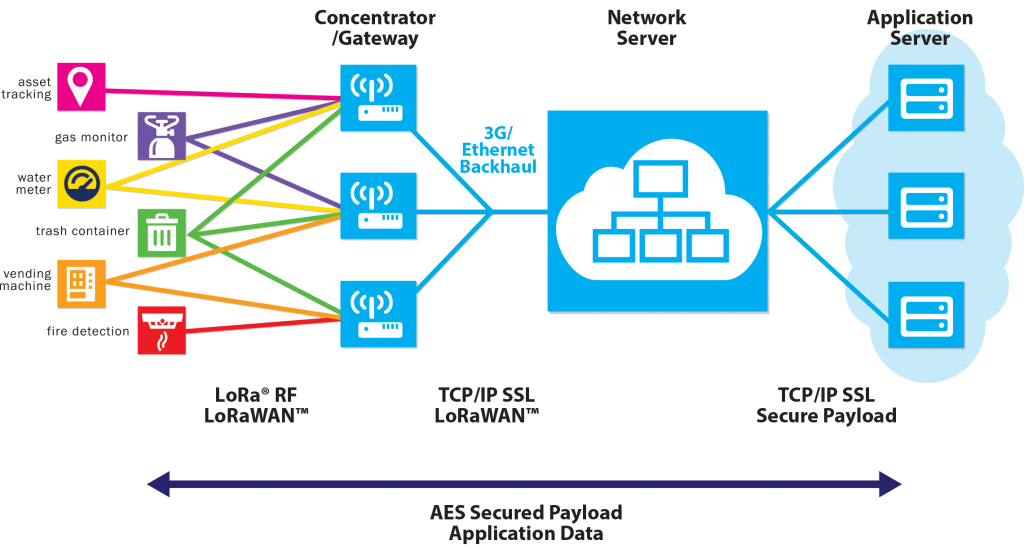Since at the end of 2017. it is possible to use LoRaWAN network at the TTÜ campus. Although the coverage area of the LoRaWAN network is officially advertised more than 15km, in urban conditions could be taken into account in a relatively decent area within few kilometers. The services provided by the network can be used by all parties. It is possible to use the network for three purposes:
- To develop a new product or service, in which it is desired to cooperate with TTÜ. During the cooperation project, it’s possible to connect your device to the LoRa WAN network and test the whole solution without additional costs. Certainly TTÜ already has experience in setting up, tuning and testing the connection. Among other things we can help you with the following LoRa WAN network related topics:
- Adding new equipments to the network and managing it
- Decrypting of encrypted packets for data processing
- Download data with the API for further processing and analysis
- If you want to start offering your product or service for commercial purposes, the fastest way is to contact with Levira, who manages a specific LoRa WAN network and provides you with all the necessary guidance;
- If you are a student and would like to learn how to use LoRaWAN or participating in some projects that needs low power wireless data transmission then contact us and we will help you out.
Advantages of LoRaWAN
- Very wide coverage range about 3-5 km in urban areas and 15 km in suburban areas
- Consumes very low power and hence battery will last for longer duration (up to 10 years)
- Uses Adaptive Data Rate technique to vary output data rate/Rf output of end devices. This helps in maximizing battery life as well as overall capacity of the LoRaWAN network. The data rate can be varied from 0.3 kbps to 27 Kbps for 125 KHz bandwidth.
- Uses 868 MHz/ 915 MHz ISM bands which is available world wide
Disadvantages of LoRaWAN
- Can be used for applications requiring low data rate i.e. upto about 27 Kbps.
- LoRaWAN network size is limited based on parameter called as duty cycle. It is defined as percentage of time during which the channel can be occupied. This parameter arises from the regulation as key limiting factor for traffic served in the LoRaWAN network.
- It is not ideal candidate to be used for real time applications requiring lower latency and bounded jitter requirements.
Introduction to LoRaWAN

LoRaWAN is radio network procotol designed to allow low-powered devices to communicate with Internet-connected applications over long range wireless connections. LoRaWAN operates in unlicensed radio spectrum. In Europe, LoRaWAN operates in the 863-870 MHz frequency band. This frequency band is divided into channels and most channels used by LoRaWAN have a duty-cycle as low as 1% or even 0.1%. The data rate depends on the used bandwidth and spreading factor. LoRaWAN can use channels with a bandwidth of either 125 kHz, 250 kHz or 500 kHz, depending on the region or the frequency plan.
The LoRaWAN specification defines three device types. All LoRaWAN devices must implement Class A, whereas Class B and Class C are extensions to the specification of Class A device:
- Class A devices support bi-directional communication between a device and a gateway. Uplink messages (from the device to the server) can be sent at any time (randomly). The device then opens two receive windows at specified times (1s and 2s) after an uplink transmission. If the server does not respond in either of these receive windows (situation 1 in the figure), the next opportunity will be after the next uplink transmission from the device. The server can respond either in the first receive window, or in the second receive window, but should not use both windows.
- Class B devices extend Class A by adding scheduled receive windows for downlink messages from the server. Using time-synchronized beacons transmitted by the gateway, the devices periodically open receive windows.
- Class C devices extend Class A by keeping the receive windows open unless they are transmitting, as shown in the figure below. This allows for low-latency communication but is many times more energy consuming than Class A devices.
Devices and applications have a 64 bit unique identifier (DevEUI and AppEUI). When a device joins the network, it receives a dynamic 32-bit address.
LoRaWAN 1.0 knows three distinct 128-bit AES security keys.
- The application key is only known by the device and by the application.
- When a device joins the network (this is called a join or activation), an application session key and a network session key are generated.
- The is shared with the network, while the is kept private. These session keys will be used for the duration of the session.
More information is on www.thethingsnetwork.com. Above information is partly based on the mentioned web site.

